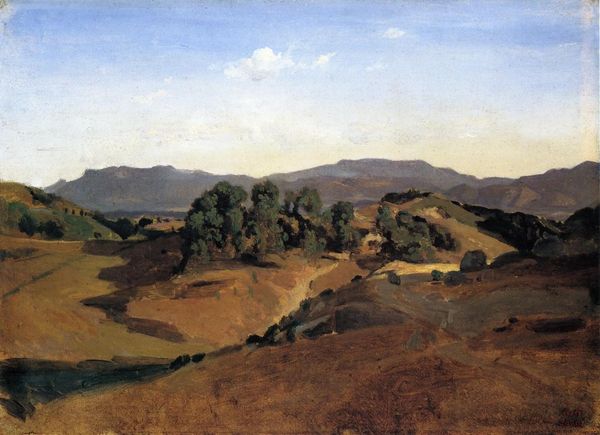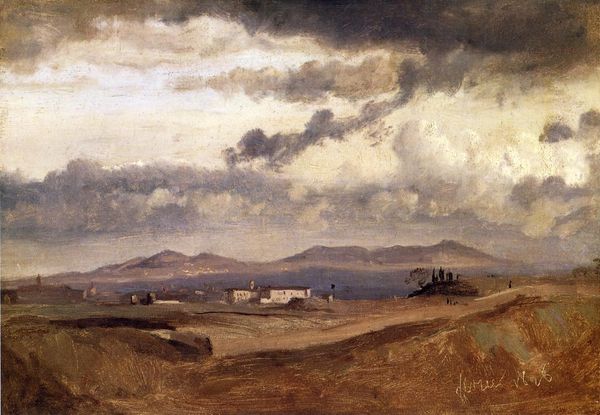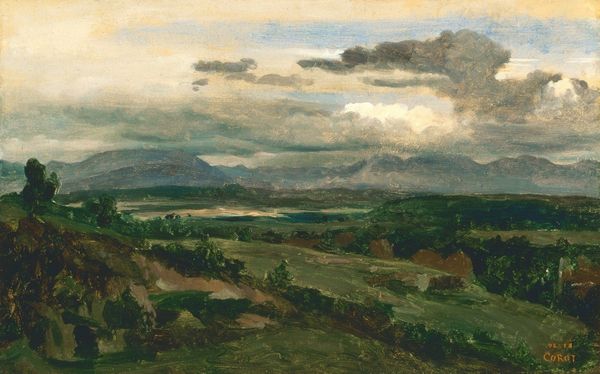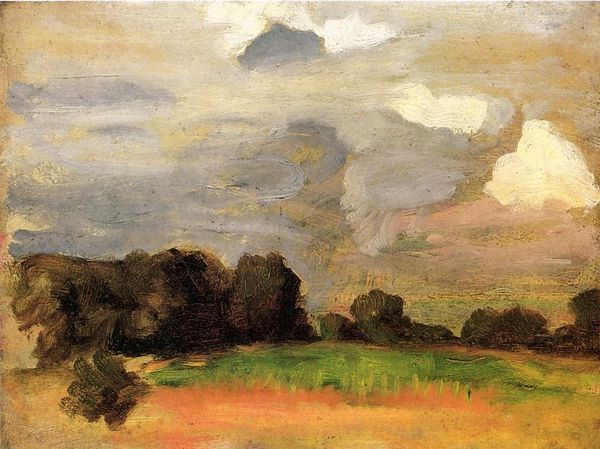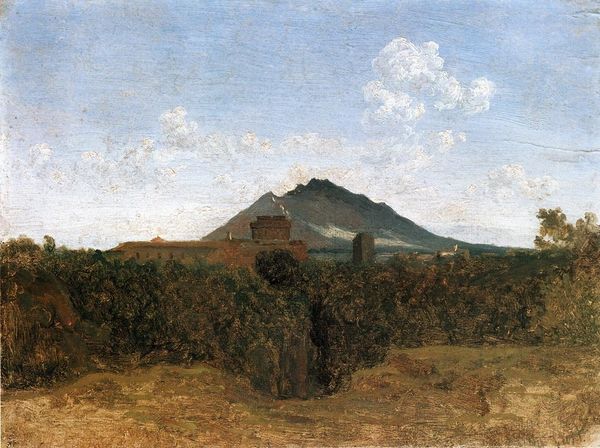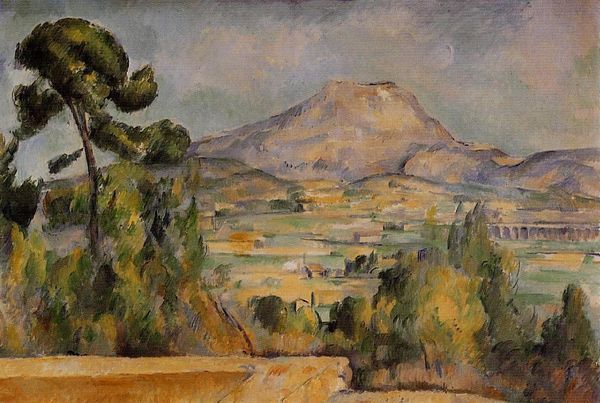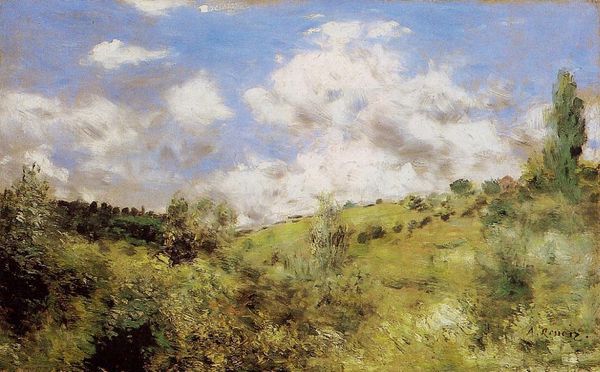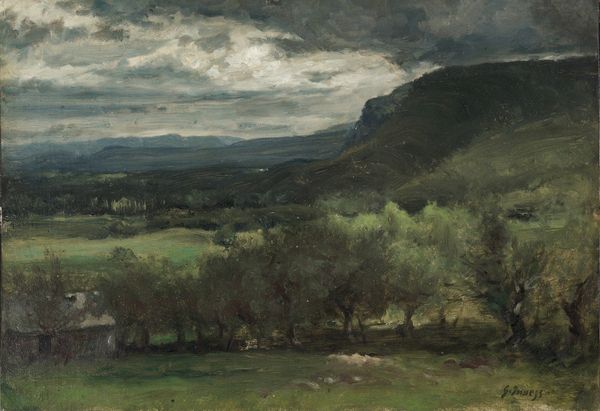
painting, plein-air, oil-paint
#
painting
#
plein-air
#
oil-paint
#
landscape
#
impressionist landscape
#
oil painting
#
romanticism
#
cityscape
#
realism
Copyright: Public domain
Curator: This is Jean-Baptiste-Camille Corot’s "Mont Soracte," painted in 1827. Editor: It's quite somber, wouldn't you say? The palette is almost entirely muted browns and greens, save for that small patch of blue sky fighting through the clouds. Curator: Precisely! The layering of landscape and weather allows the eye to travel. But what resonates is the social dimension of landscape art, particularly how depictions of nature intertwine with evolving concepts of nationalism and belonging. Where was Corot positioned to create this artwork, who had the luxury of appreciating such pastoral views? Editor: A fascinating question that underscores the economics of landscape painting. And looking at Corot's application of oil paint, you can see he worked quickly, likely *en plein air*. The way the pigments are mixed shows his understanding of how light reflects off different surfaces. There's an implied knowledge of the material properties of the land, too – its textures and affordances. Curator: I agree! But thinking about how the French countryside itself was being perceived at that time—as a source of national identity and pride post-Revolution—is key. Didactic landscapes aimed at unifying a nation were on the rise, and the politics embedded in seemingly picturesque scenery have always played a role. Editor: Definitely. Considering the materiality, what intrigues me is how Corot manages to balance detail and impression. He renders the form of the mountain with geological accuracy but simplifies the surrounding foliage and buildings. I can sense the wind and the change in the light. Curator: And doesn’t it subtly engage with romantic tropes, presenting nature as simultaneously awe-inspiring and somewhat threatening? The lack of figures makes the mountain a dominating presence; Mont Soracte is so large! Editor: Right, he highlights nature's impact through the material elements that allow him to craft this sweeping view. You can appreciate the history behind this work based on how the material’s applied in layers. Curator: Thank you! Analyzing its intersectional elements truly enriches our perception of the landscape as more than just scenery. Editor: Absolutely, seeing art through its creation brings an even more tactile awareness of landscape.
Comments
No comments
Be the first to comment and join the conversation on the ultimate creative platform.
